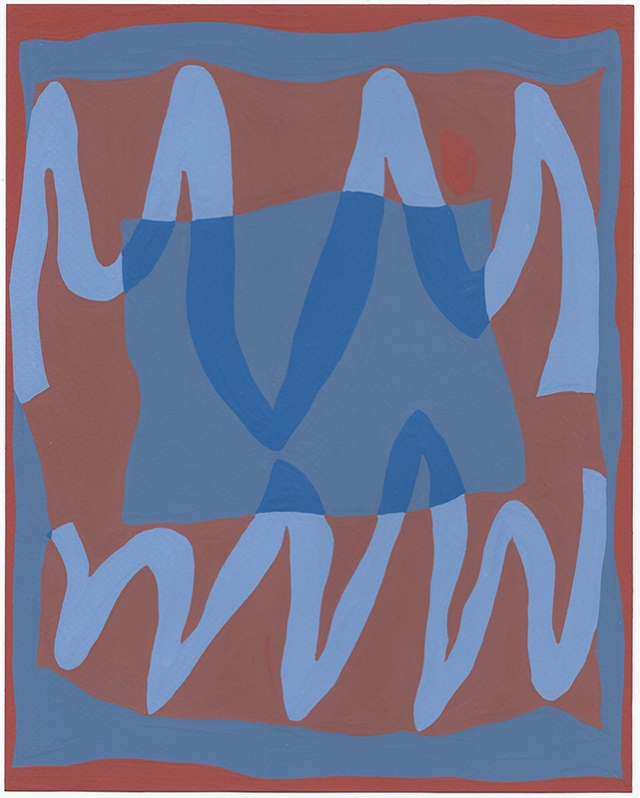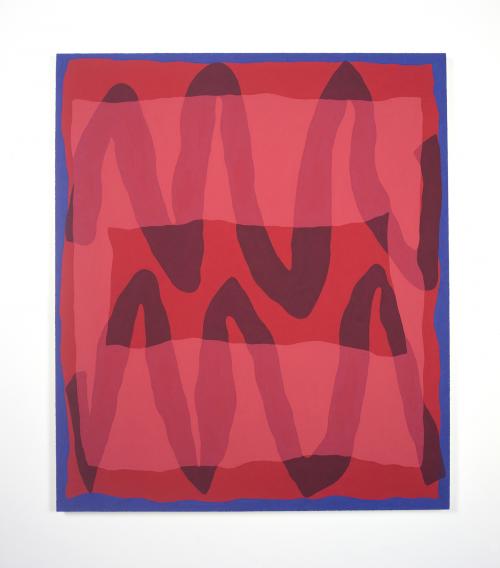Amie Cunat was a challenging artist to evaluate, especially given my lack of experience and understanding of her particular genre and methodology. I was always surprised by how contrasting my initial responses to her work and her brief illuminations were. Pieces that seemed to me to be mere explorations of color and shape — essentially studies in effective design — were conceptual, multifaceted masterpieces to her. This great element of subjectivity seemed to play a large role in her artworks. Countless interpretations could be generated from a single piece, if enough time was committed to it. Time, however, is a commodity which we treasure highly in North American culture. And work that requires many layers of unraveling — unraveling which requires many leaps of logic for the average viewer, or a strong foundation in abstract painting concepts — is unlikely to spark much deep intellectual conversation in typical, public contexts. I feel that Cunat spoke about these conversations as if they were implicit, though I doubt if they were brought up by a common viewer, they would be considered by others with much weight. Obviously we take Cunat’s conceptual explanations to be true, because she is the only person on earth who truly holds the merit to define the message of her work.
That aside, Cunat brought up some interesting prompts for her pieces, be they implicit or utterly cryptic. She explored psychological language barriers, painting as a physiological, human act, and the effects of tactile experience when filtered through sight.
She described her first paintings as being single events which occur simultaneously in a whole. To me, this implied that her work came very close to exhibiting a true two dimension state, where all elements exist on a single plane of not only space, but time. Although I found the message unclear, and the paintings unpersuasive, perhaps even apathetic, I enjoyed this conceptual exploration of 2D space-time. Cunat moved on to touch on her affinity for and obsession with patterns and textiles. These works were much more involved, and aesthetically more ambitious. They asserted a kind of atmosphere and space that previously was absent. Almost moving in an evolutionary path of dimensionality, Cunat then brought up recent sculptural works. Although her overall body of work was surprisingly uniform and solidified for someone so young, her later work was marked by more experimental 3D sculpture and installation — a venture which I found far more enticing than her earlier pursuits. Cunat remarks how 3D works can “create new context for a preexisting site”, essentially reshaping an open space into a used, potentially interactive space. Sculptures, I feel, do present heightened elements of touch, utilitarian usage, play, and informal interaction. These elements did seem to compliment Cunat’s conceptual process well, particularly her fascination with juvenile objects/ spaces.
Transparency became a key player in many of her paintings, acting as a way to both hide information and resist the viewers immediate impression, thus adding just a second layer of time to her 2D work. One image occurs, then the hidden image gives itself to the viewer, after some hesitancy. This approach inserted some interesting linguistic implications as well as potential for (slightly) more complex 2-part narratives, as apposed to static, simultaneous imagery.
Cunat’s Japanese heritage and her relationship to the Japanese language came up a number of time throughout her talk. She sought to deconstruct her “corrective language”, and explore how language is harnessed in early development years. Again, I found her work to function as an elusive lilt when formulated within its intended context. There were hints of language, academic formatting and childlike impressions, but nothing to take me to that next step of comprehension which she spoke about. Perhaps she didn’t wish to imbue her work so explicitly, perhaps she doesn’t care what the takeaway is, but I would argue that if an artist has a strong conceptual foundation for her work, she should balance instincts towards enigmatic aesthetic, and messaging through more obvious means. In my (current) opinion, inclusiveness and accessibility should always be on a artists mind if she means her work to be successfully experienced.



